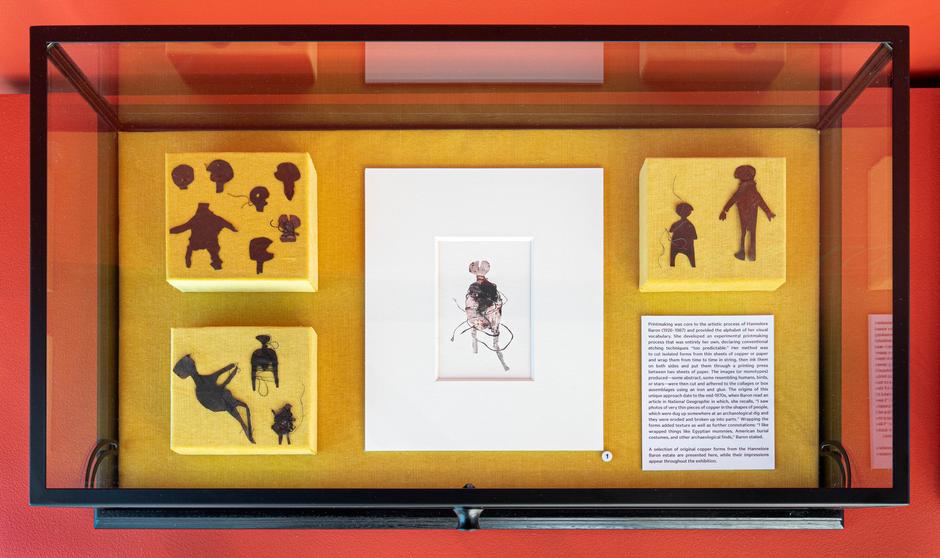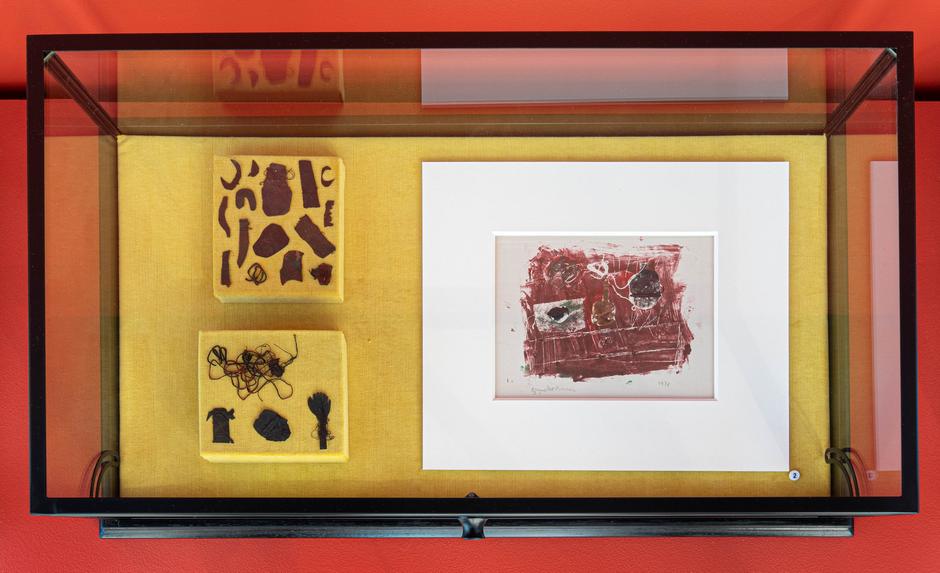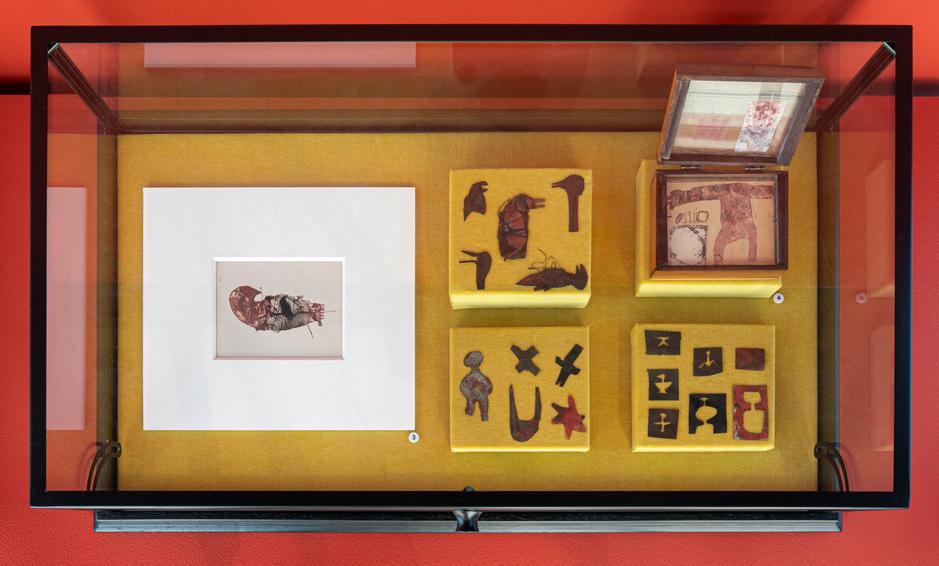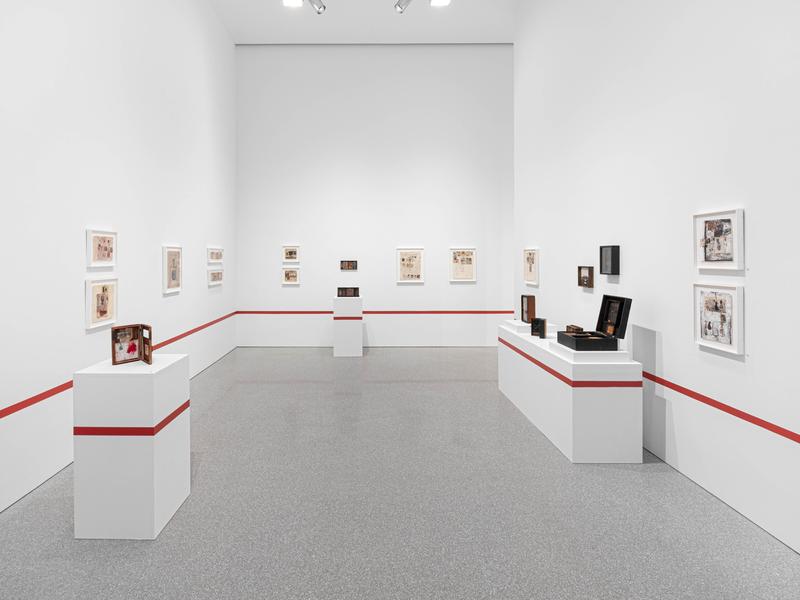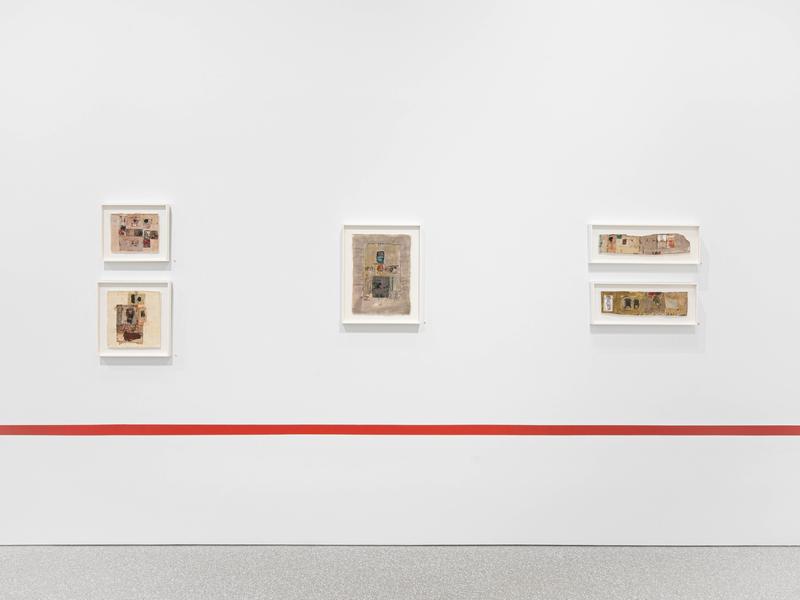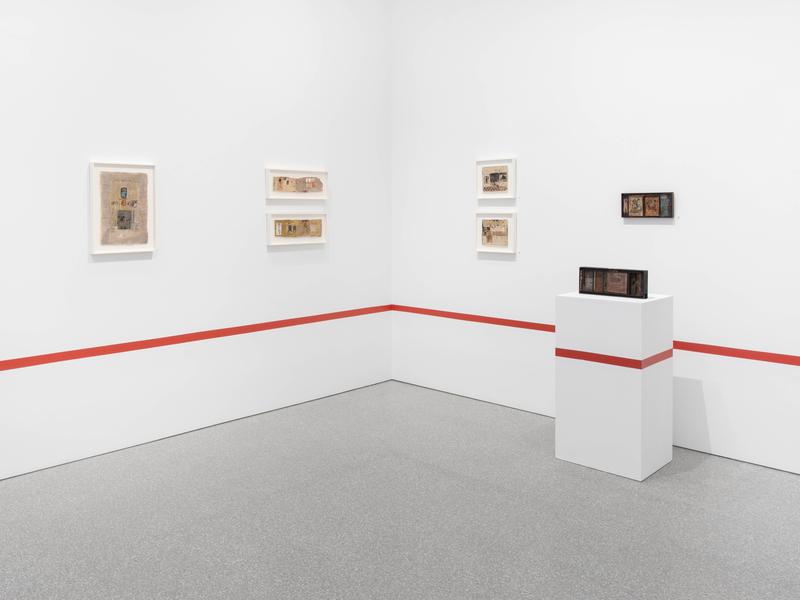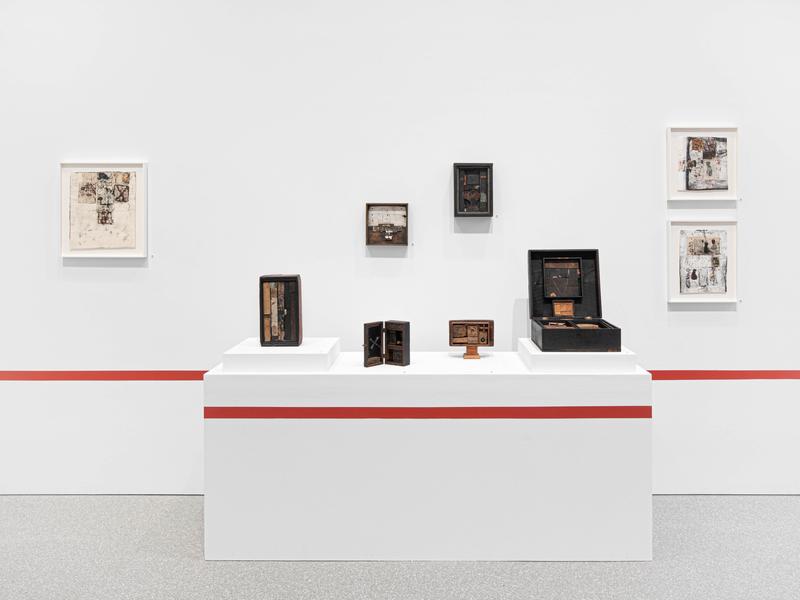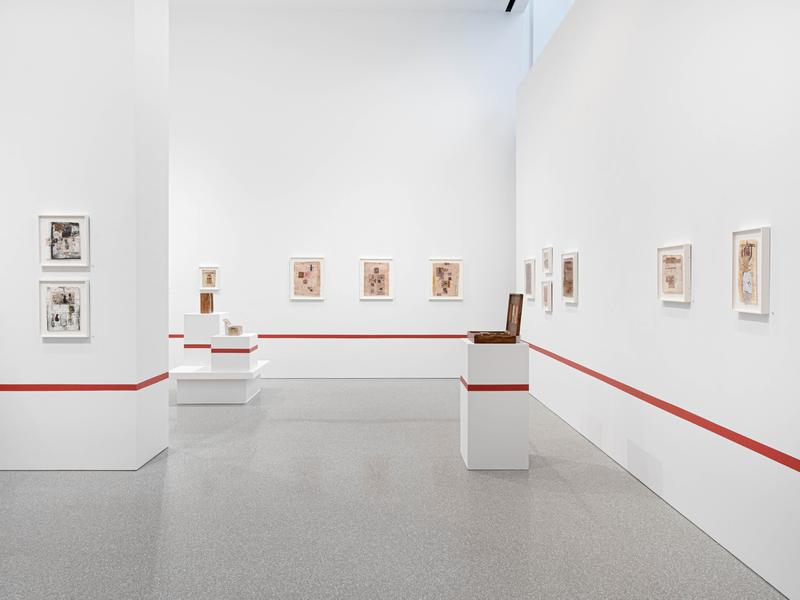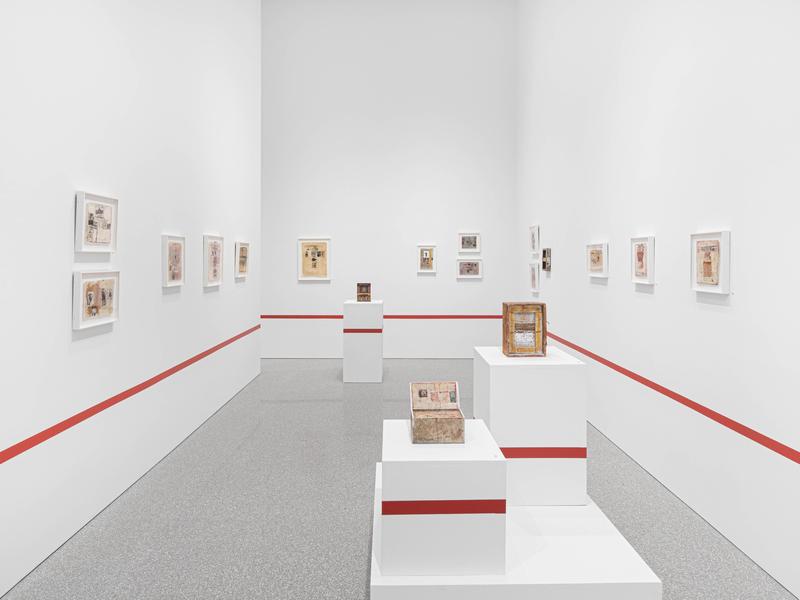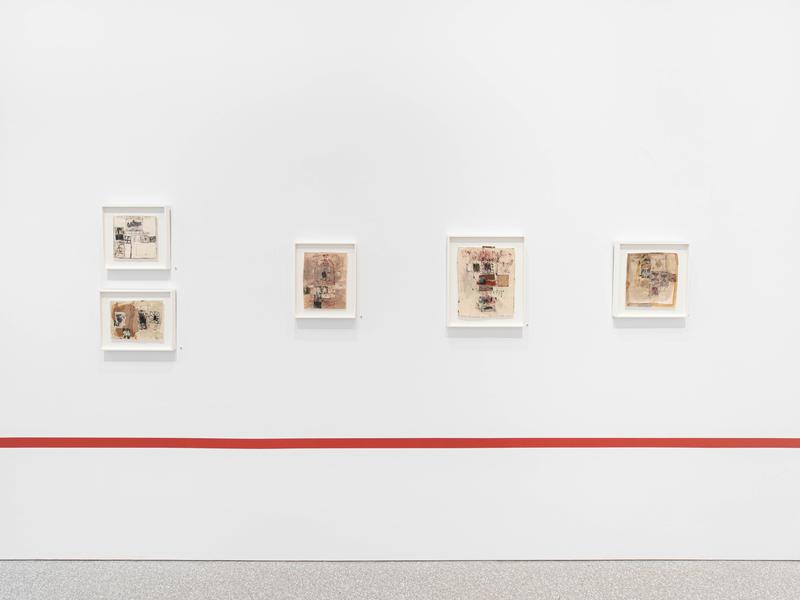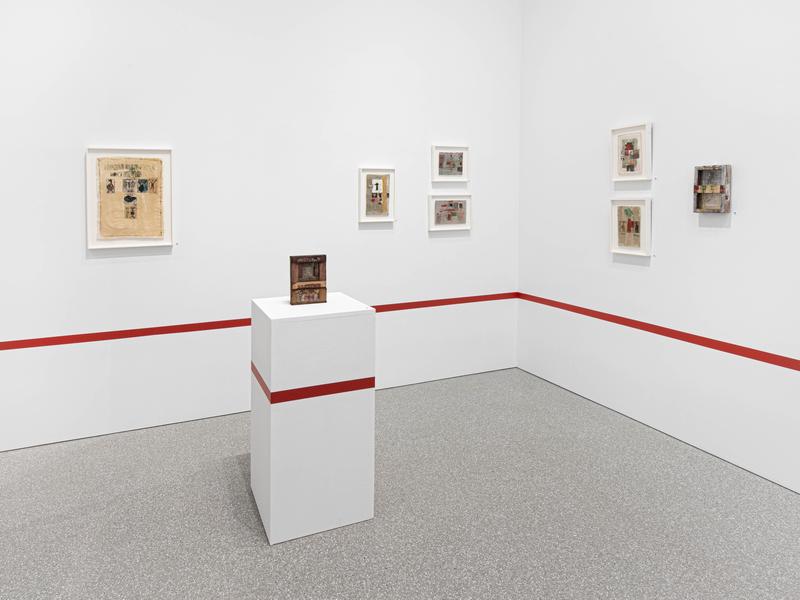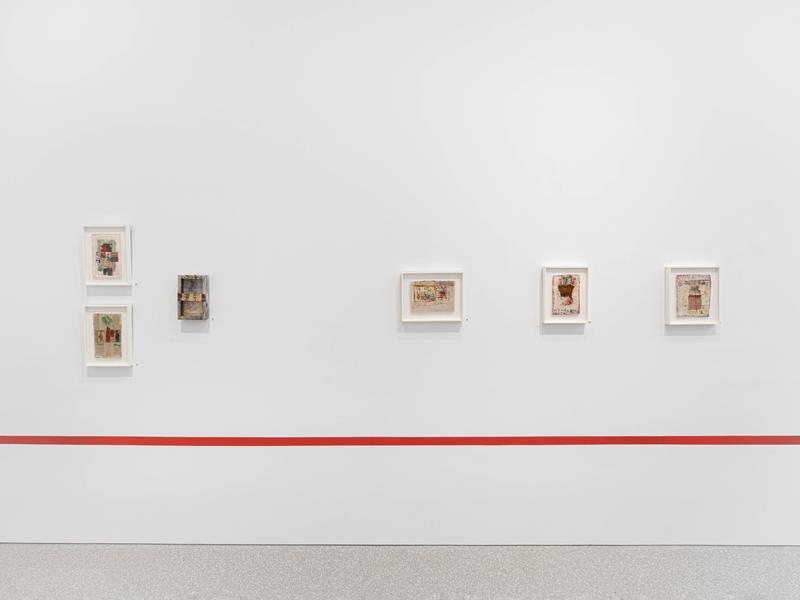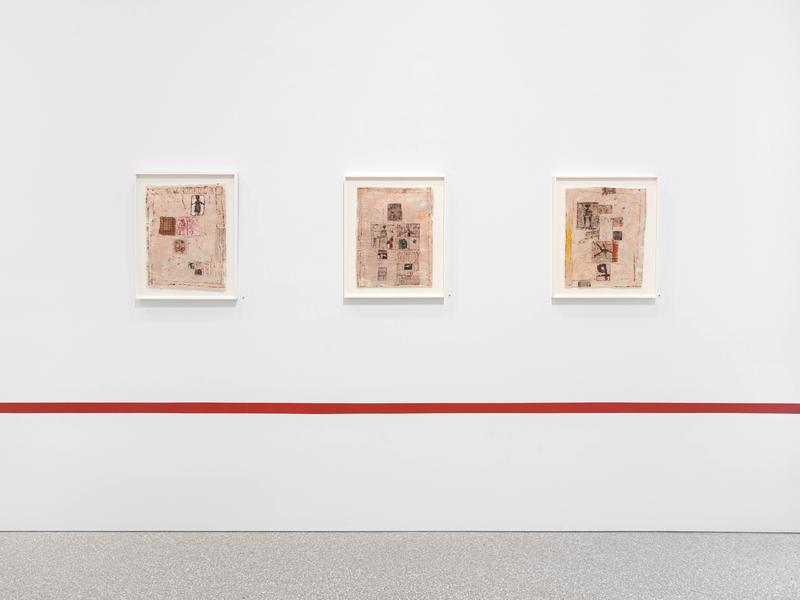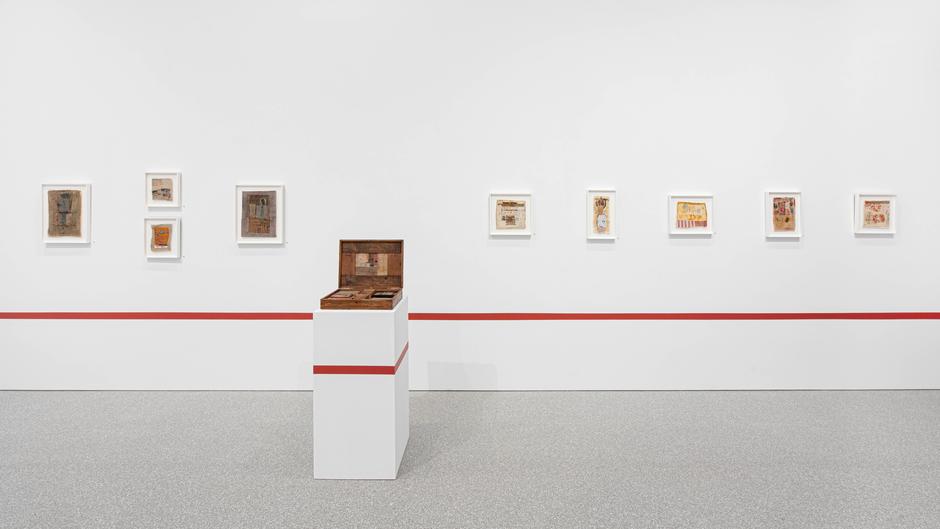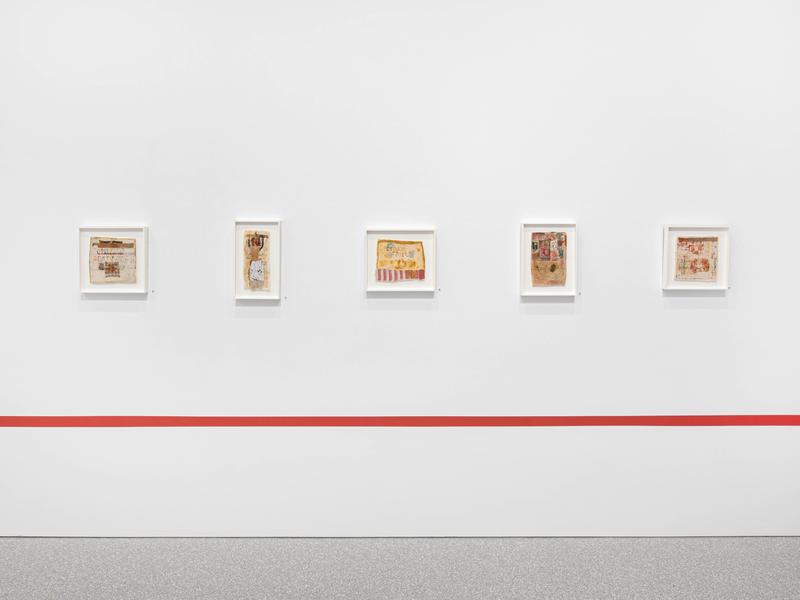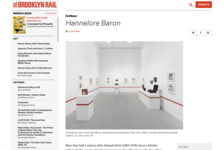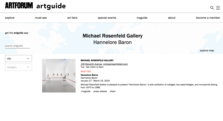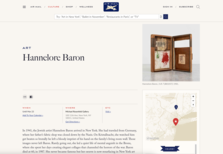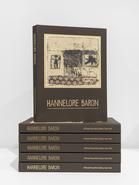Michael Rosenfeld Gallery is pleased to present Hannelore Baron, a solo exhibition of collages, box assemblages, and monoprints dating from 1970 to 1986. Focusing on the artist’s singular visual language of signs, symbols, and ciphers, Hannelore Baron provides an in-depth look at her personal iconography and material sensibility. A dedicated display featuring a selection of the unique cutouts the artist used to make the monoprints integral to her compositional approach provides a special insight into her technical processes. Presenting thirty-eight collages, fifteen box assemblages, and three monoprints, Hannelore Baron will be accompanied by a fully illustrated exhibition catalogue publishing new scholarship by art historian, professor, and curator Anne Koval.
Evocative of the textual remnants of an ancient, lost language, urban graffiti, or children’s drawings, Baron’s poetic vocabulary of formal motifs and inscriptions imbue her collages and assemblages with a sense of enigma. As Ingrid Schaffner, curator of Baron’s 2002 retrospective organized by the Smithsonian Institution Traveling Exhibition Service (SITES), observed, “Each of her intimately scaled works appears vast, filled with the quiet energy and visionary power of medieval manuscript illuminations. Indeed, Baron’s art might be considered a form of illumination for modern times, aptly rendered in the language of abstraction.”[1] Many of Baron’s repeated symbols—such as stars, flowers, birds, windows, and bound figures—resemble a form of pictographic writing, a quality that is complicated by her frequent application of linework that possesses the qualities of script but denies any attempt to decipher it. This ambiguity, she explained, was intentional: “The writing that covers much of the surface is deliberately illegible because it represents all the words that have been written to tell the unimaginable and explain the unexplainable.”[2]
Composed of weathered and worn found materials, Baron’s box assemblages may be understood as personal shrines or theaters of emotion, serving, as critic Lyle Rexer wrote “as reliquaries for this secret language, surrounding it with the dark tones of the personal history she sought to play down.”[3] The earliest boxes date to 1968, when she began making assemblages from discarded wood, driftwood, and wire while working as a volunteer teacher at the Yonkers Jewish Community Center, which provided her access to woodworking tools. Produced alongside her collages, the boxes soon came to reflect the refinement of her formal strategies and compositional acumen, arraying a wide range of materials, including her own collages and monoprints, within a variety of box formats. Often reflecting her concerns with secrecy, privacy, and containment, Baron’s boxes constitute receptacles of the “fragments and splinters of civilization, remnants that testify to significance for memory and the creativity of that which is left behind,”[4] as critic Fredric Koeppel writes.
The cryptic language that imbues the surfaces of Baron’s boxes with “meanings never fully disclosed,” as Lyle Rexner put it, likewise illuminates the carefully arranged elements of her collage works. Baron’s collages often incorporate fragments of threadbare fabric, which invite the viewer to consider the subtle textural variations that lend each composition a sense of tactility and intimacy. “The materials I use in the box constructions and cloth collages are gathered with great care,” Baron explained in a 1981 interview. “The reason I use old cloth…is that the new materials lack the sentiment of the old and seem too dry in an emotional sense.”[5] Most of the works on view in Hannelore Baron combine collage with delicate ink linework and expressive monoprint processes. Elements resembling doors and windows often suggest the presence of miniature rooms or chambers populated by her careful arrangement of symbolic motifs. Meticulously layered to bring out certain qualities of her materials and foreground the mystic formal language that unites them, Baron’s collages, as Koval writes, “read like ancient palimpsests,”—the term for a manuscript wherein writing has been erased to make room for a new passage, but still retains traces of the original text. “Palimpsest texts are often made unreadable with the most recent writing obscuring its precursor, to further embed narratives from the past,”[6] Koval observes.
In addition to an exemplary selection of collages and box assemblages, Hannelore Baron offers a special insight into one of Baron’s technical processes with three vitrines dedicated to the metal and paper cutouts the artist used to print many of the enigmatic symbols found in each body of work. The origins of this unique approach date to the mid-1970s, when Baron read an article in National Geographic describing an archaeological dig that unearthed “very thin pieces of copper in the shapes of people… they were eroded and broken up into parts.”[7] This inspired her to develop her own printing process: after cutting a desired shape from paper or a thin sheet of copper, which she sometimes wrapped with string or cloth, Baron would ink the cutout and then create a print with a handpress that she kept in the basement of her home in the Bronx. After the prints were finished, she would incorporate them into her collages and assemblages with glue and an iron. Over the course of her career, Baron created nearly ninety cutouts that she used repeatedly in a variety of configurations. Typically taking the form of humanoid and avian figures bound by ropes, these printed forms often eliciting themes of imprisonment and restraint. The avian imagery that began to appear in Baron’s work starting in the early 1980s was also brought about by a piece of reportage: after a major oil spill off the coast of Brittany, images of struggling, oil-covered birds proliferated throughout the media, becoming a devastating emblem of environmental crisis as well as, for Baron, “the small and defenseless that will be crushed in the rush toward ever greater material comfort and deadlier wars.”[8]


